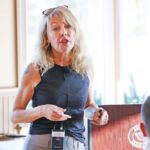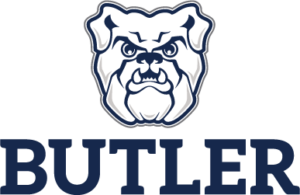Discipline & The Brain
Redirect and Reflect
Turning Discipline into a Science
Educator and Students Brain Alignment!
If you lack a deep memory of feeling loved and safe, the receptors in the brain that respond to human kindness fail to develop! (Van Der Kolk)
If we feel safe and loved, our brains specialize in exploration,
play, and cooperation!
If we are constantly feeling frightened and unwanted or unloved,
our brains specialize in managing feelings of fear and abandonment!
Trauma creates a different nervous system and blood chemistry!
Just as we teach procedures, transitions, guidelines and rituals, this behavior engagement system will need to be introduced, discussed, questioned, modeled and practiced. Depending upon the grade level, the time with students (all day, 90 minutes, 50 minutes) modifications can be made an should be created to fit the needs of this classroom. It is a support system of educators and students, but the difference in this model is that it includes and emphasizes the brain of the educator. We are never called to fix a child or adolescent, and behaviors we want to see most often, need to be taught. PBIS, Restorative Justice and other programs do a wonderful job in supporting student choices, affirmations, validations and discussion with a child centered voice. Consequences for poor behavior choices need to be in alignment with how the brain prioritizes, judges and understands its limits, reactions and responses. The brain will continue to secrete dopamine, a neuro hormone that activates our pleasure and goal centered areas IF our mistakes are met with informative feedback, and a steady compassionate presence from the adult brain inside the relationship, dialogue, or conflict. Short term goals are what we need to emphasize within this program, because the brain is under-developed and cannot matriculate long range plans or goals. Short term goals meaning hourly and daily are so critical for creating islands of forced success.
Outline
A. Teach students about their neuro-anatomy ( two to four weeks)
- Prefrontal Cortex
- Neuroplasticity
- Amygdala
- Hippocampus
- Social Brain/ Development / Peer Influences
- Stress Response/ Limbic Brain
- Self-Reflection
Redirect and Reflect turns discipline into science for both teacher and student! It is tailored to be proactive and a part of teaching procedures, transitions and rituals. It uses our bodies to redirect behavior and never our mouths! (Never go public!!) It is self-reflective and created from these four guidelines!
- We Belong- Am I important to someone here?
- We Try- Am I good in my efforts here?
- We Shine- Can I influence my world here?
- We Serve- How can I share my gifts to help others here?
The goal is to not only stop the behaviors we don’t want… we are good at this, but start the behaviors we do want!!
Class Guidelines
Assess and Change Often!
Reinforce with Social Incentives
- Be Safe
- Be Helpful
- Be Respectful
- Be Responsible
What do these look like in the hallway, small groups, whole group, homework, late work, arrival and dismissal?
Truth Signs
- Everyone needs different supports, incentives and resources for learning and behavioral choices.
- Everyone needs time to think and learn.
- We each learn in our own ways by our own time clock.
- It’s intelligent to ask for help. No one needs to do it alone.
- We can be successful when we take risks and make mistakes.
Establish Rotating Peer Groups
hey will meet together for 3 to 6 weeks. These groups will develop an identity through poetry, songs, a mantra, a quote or chant. They will continually address the following questions within their groups.
- How do we solve problems?
- How do we show kindness?
- What are our strengths?
- What are our challenges?
- How do we solve conflict?
Back – Up Systems
Back-Up Systems are always to be used for the short term and never intended to start new behaviors we want to see!
Types of Back- UP Systems (Get Back Up!!!)
A. First Step/ Co-Regulation
- Amygdala First Aid Station
- Train of Thought Area
- Peer Mentoring
- Assigned Teacher Classroom or Brain Lab ( School wide)
B. Validation and Questions
- That must have made you feel really angry.
- What a frustrating situation to be in!
- It must make you feel angry to have someone do that.
- Wow, how hard that must be.
- That’s stinks! That’s messed up!
- How frustrating!
- Yeah, I can see how that might make you feel really sad.-
- Boy, you must be angry.
- What a horrible feeling.
- What a tough spot.
Questions
- What do you want?
- Do you have a plan?
- How can I help you?
- What are your resources?
- What feels difficult?
- What could be the best possible outcome?
- What is the worst thing that could happen?
- Is your interpretation really true?
- How do you know this?
- What is a first step in improving this situation?
C. Call Home/ Consult with teacher
D. Dual Reflection Sheets
- What did we see?
- What did we hear?
- How did we feel?
- What guideline was not followed?
- What are two adjustments we could make the next time?
- What is one thing we both did well?
Reasonable Consequences
The brain loves to make sense out of experiences, information, and relationships that fit together. This is why we need to implement consequences that attend to the hurt or pain that one person has caused another. Consequences for poor decisions and the choices aligned with them will make sense and feel relevant and meaningful to students who are ready to process this information, responding from their frontal lobes in a calm brain state. This is the place in which they’ll experience and feel the connection between choices and consequences. Here are some examples of those connections:
- For a student who interrupted whole-class learning, have him or her create an extra-credit assignment for the class on a specific topic or standard.
- For a student who used unkind words to another classmate, have these two partner to create a special assignment, job, or favor for another class or the cafeteria or office staff, starting a “pay it forward” chain for a week of school.
- For a student who showed disrespectful behavior toward an adult, have him or her write a letter of apology explaining what was beneath the hurt feelings that caused the behavior, accompanied by a plan of action to make amends for the hurt feelings that he or she caused.
- There are many YouTube videos presenting kindness, empathy, and the tough struggles of others that students will enjoy and learn from. This activity helps us reach beyond our own stubborn egos and negative emotions to serve another. The following links take you to sources of short videos that will help your students create positive emotions and diminish anger:
- Pennies of Time
- Random Acts of Kindness
- Kind Kids Club
What are other ways that we could align consequences to impact future behaviors with positive emotion?
Keep engagement high!! / Part of a Pro-Active Discipline Plan!
As I prepare for summer coursework and professional developments, I wanted to share these researched brain aligned strategies we will be exploring in the Butler educational neuroscience course in 10 days!
- Paying attention means using novelty!
- Keep the fun in learning and never save it for the end!
- Students who are constantly relating new standards and material to personal experiences perform better than those who memorize for the test!
- Brain Breaks not only create novelty, but they give the brain some incubation time to fix and form neural circuits!
- We need to rename “Testing” to “Retrieval Practice” as forgetting is important to learning and we need to create frequent conditions where students have the opportunity to retrieve information!
More to come!!!
Developmentally students in upper elementary and middle school are walking in with heightened limbic brain activity which can look awful and ugly to adult and even other students. These years are so confusing and just as important as school and classroom rules are student and class “Strength and Action Plans!
- What are my strengths?
- What are my passions? How can I use these and show case these this year?
- What do I enjoy?
- What are my challenges?
- How can I integrate these in my classrooms this school year?




